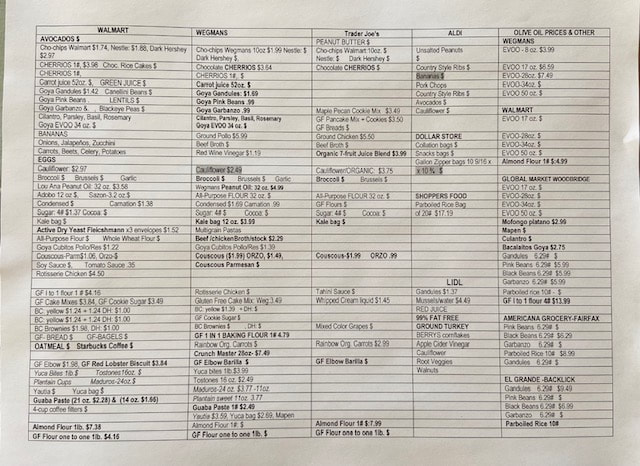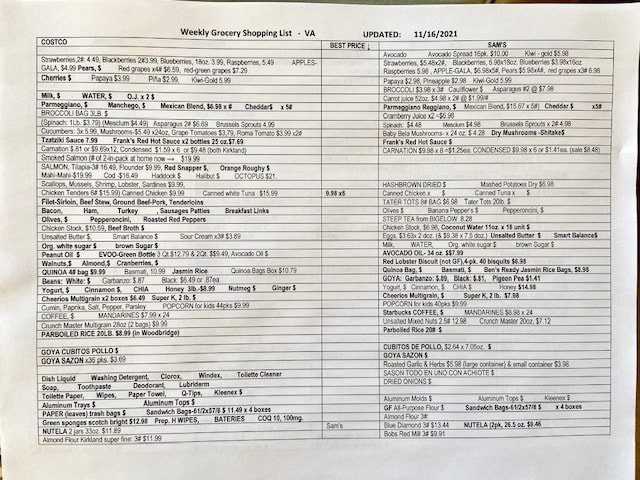|
It is so simple. Many years ago, I decided to draft a list of my favorite grocery stores with the list of the product that I purchase often from them. I print a copy weekly and highlight what I need.
Then later, I took it to another level, when I noticed that the same product had different prices per stores, and at times significant. So, I added prices to my list and identified products exactly by pound, ounces, etc. I must say that I was up for a nice surprise. Today, I want to share my groceries format list with you, in case that you decide to draft a list of your favorite grocery stores and get your products at a cheaper price. Hope you like it, smile. I developed 2 columns for my large retailers, COSTCO and Sam’s. I also developed a similar chart for my other day-to-day shopping: Lidl, Walmart, Wegman’s, Trader Joe’s, Aldi, and Some Asian and Latin Markets that carry products that I use either regularly or not as often. To give you an example, this is just one of the comparisons I did on 7 stores. However, be aware that produce and other products change prices every now and then: Item: One 12oz can of Carnation Brand Evaporated Milk Price: Store #1: $1.38 Store #2: $1.25 Store #3: $2.53 Store #4: $1.00 Store #5: $1.50 Store #6: .81 (Costco Kirkland brand) This is just in one product. But if you purchase 6 cans, this is what you could be paying: 6 cans @ $2.53ea. = $15.18 6 cans @ $1.38ea. = $ 8.28 6 cans @ .81ea. = $ 4.86 The question is, what are you willing to pay to save? To me is totally worth it to spend some time developing these charts that save me lots of dollars.
0 Comments
Leave a Reply. |
ABOUT THE AuthorI am a blogger, a photographer, a jewelry designer, a gourmet cook, and a recipe book writer. I am also a flea market flipper, an avid gardener, an interior/ outdoors designer, an avid golfer and traveler. Categories |


 RSS Feed
RSS Feed